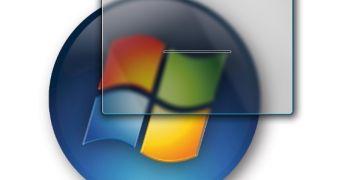It might not sound like all that much, but it is a definite confirmation that there is life after Windows Aero. And as far as the scarce details on Windows 7 go, any palpable piece of information goes a long way. Microsoft is cooking an improved graphical user interface for the next iteration of the Windows client. Windows Division's Core User Experience team is hard at work taking both the user interface and user experience of Windows 7 to the next level.
"The Core User Experience team focuses on experiences that include interaction with the desktop, the taskbar, the start menu, switching between applications, control panels, gadgets, media experiences, etc. Essentially our charter is improving that "core user experience" that millions of users navigate daily so that the next version of Windows is not just improved, but a 'must have!'", Microsoft revealed.
As a mark of the evolution of Windows Vista in comparison to Windows XP, a new display driver model was introduced with the latest Windows release. The vast majority of Vista end users might not be aware of this but they use the new display driver model on a daily basis, because it is at the foundation of Windows Aero.
So far Microsoft has failed to reveal in which manner it will move Vista's visual interface technology further in Windows 7. In fact there is no telling how the architecture in the next version of the operating system will end up at this point in time.
"In addition to a big focus on user experience and customer feedback, we're a highly technical organization that is focused on developing automated testing collateral. To that end, we're big into testability (separate the UI layer so you can automate without the UI!) but also passionate about making sure we have the right experiences - something much more visceral", Microsoft added.
Vista takes full advantage of graphics cards with GPUs supporting the display driver model and with consistent volumes of dedicated memory. This is the main reason why the latest Windows platform fails to play well with hardware that doesn't live up to its requirements. One thing that Microsoft has done in Vista, was to focus the display driver model on its user-mode driver component, effectively taking it out of the operating system's kernel.
In this manner overall stability of the product increased, since graphic driver issues no longer delivered OS-wide critical errors. What Microsoft needs to do next in Windows 7 is to kick the componentization of the display driver model up a notch and make it completely independent of the kernel. But also work on delivering more performance with fewer resources, essentially perfecting the Windows Aero design.

 14 DAY TRIAL //
14 DAY TRIAL //